In today’s world, manufacturing uses plastic as its primary component, however, the adverse effects on the environment are becoming more pronounced. As industries globally search for environmentally friendly alternatives, the distinction between using virgin and recycled plastic pellets has turned into a critical juncture. This article presents the advantages and drawbacks of both options so that Companies focusing on enhancing performance without compromising on cost can refer to these insights. Reassuringly, whether an organization wants to hone its processes or support green initiatives, learning more about the materials will allow it to act sustainably. Continue reading to learn about the factors that make each choice significant and see how your decisions can lead to positive change.
What are the Environmental Impacts of Using Virgin vs Recycled Plastic Pellets?
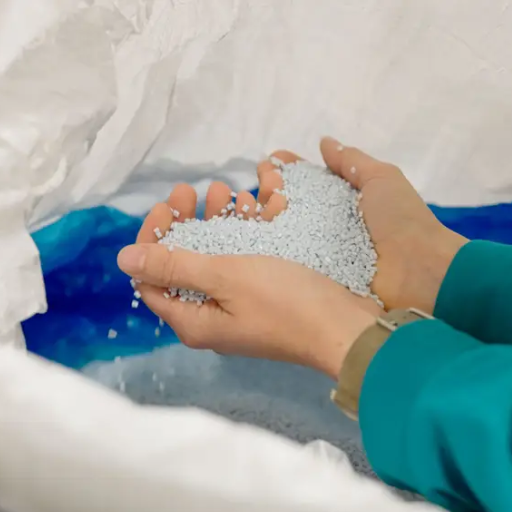
Creating virgin plastic pellets consumes energy and contributes to greenhouse gas emissions. This is mainly due to the use of raw materials such as Petroleum, which contributes to the depletion of non-renewable resources. This method also generates waste.
In contrast, recycled plastic pellets are produced from post-consumer or post-industrial plastic waste. The production of these products helps reduce energy and carbon emissions significantly. Moreover, it aids in lessening the strain on landfills and mitigating the impact on ecosystems.
Recycled plastics’ lower emissions combined with the reduction of plastic waste helps lessen the detrimental environmental effects associated with pollution, resource depletion, and global warming. This makes the choice of using recycled plastic pellets over virgin ones a wise and sustainable decision.
How Does Virgin Plastic Production Affect the Environment?
Why is plastic considered the worst waste of all? The production of “virgin plastic” problems related to the environment heavily rely on fossil fuels, and the manufacturing processes suck in energy. Crude oil and natural gas form the backbone of non-renewable resources. Plastics are created using fossil fuels; preliminary estimates indicate that roughly 4-8% of the world’s oil output is allocated for the purpose of plastic production. This extraction system adds significantly to the greenhouse gas emissions of many people, worsening the climate.
Apart from this, fossil fuel wiping creates excess waste and pollution. Facilities that provide plastics services emit pollutants such as volatile organic compounds (VOCs) and hazardous air pollutants (HAPs) that can further deteriorate the air quality and public health. Furthermore, industrial wastewater plastic man Universidad may further pollute the neighboring water bodies, affecting the aquatic ecosystem.
By the “renewable burden” of backbone, virgin plastics make it easy for non-biodegradable construction waste to contribute to long-persisting fundamental issues. The American university research jaw module estimates reveal that more than 300 million tons of plastic are produced yearly worldwide. Large parts of this usually end up in landfills, oceans, or other ecosystems. The ever-growing sea and land of dragged plastic not only causes danger for wildlife, but arachnophobes poses shockingly threatening threats to food chains and humankind through microplastic pollution.
Switching to alternative manufacturing techniques or using recycled materials can greatly reduce the negative impacts of producing new plastics. Reducing the carbon footprint and developing a circular economy will help mitigate another challenge industries face in reducing their plastic environmental impacts.
What is the Carbon Footprint of Recycled Plastic?
When compared to primary plastic production, recycled plastic minimizes emissions significantly. Studies estimate that recycled polyethylene terephthalate (rPET) uses roughly 79% less energy than virgin PET. Moreover, greenhouse gas emissions related to recycled plastic are significantly lower, with some data suggesting up to 70% reduction when compared to virgin processes. For example, producing one ton of rPET emits roughly 0.45 metric tons of CO2, while 2.15 metric tons is released during virgin PET production.
This is made possible through the reduction of material extraction, movement, and the processing of petroleum using existing resources. The integration of recycled plastics in manufacturing processes results in reduced emissions and extended lives of plastic materials. Such steps irrefutably contribute to global initiatives while highlighting the need to lessen reliance on linear economy models aimed at combating climate change and environmental harm.
How Does Plastic Recycling Contribute to a Circular Economy?
Recycling of plastics helps in waste reduction, resource preservation, and improvement of production processes, which subsequently enables the progression of a sustainable circular economy. Globally, over 380 million tons of plastic are produced, and a large portion is discarded into the environment or landfills. Purchasing recycled plastics aids in recycling these wastes to disposal sites and helps in sustaining the production cycle of these materials.
Recycling of plastics is being widened and achieved through more advanced mechanical and chemical techniques. For instance, chemical recycling methods are used to renew the monomers for plastic goods, resulting in high-quality materials with no limit to the level of material degradation. Exhaustive research suggests that the collection industry’s energy consumption would drop up to 50% if plastic Recycling Waste materials are used instead of virgin materials. Furthermore, greenhouse gases will be emitted less with the plastic wastes, as 0.25 tons of CO2 unrestricted gas would be cleaner by replacing raw equivalents in producing reserves.
Furthermore, plastic recycling strengthens economic resilience by providing new jobs and encouraging the advancement of environmentally friendly technologies. Both governments and businesses are beginning to reward recycling initiatives—many countries have set bold goals, such as making all plastic packaging 100% reusable or recyclable by 2030. These efforts highlight the importance of plastic recycling in reducing plastic waste, protecting the environment, and supporting sustainable economic development.
How Does Recycling Compare to Using Virgin Plastics?
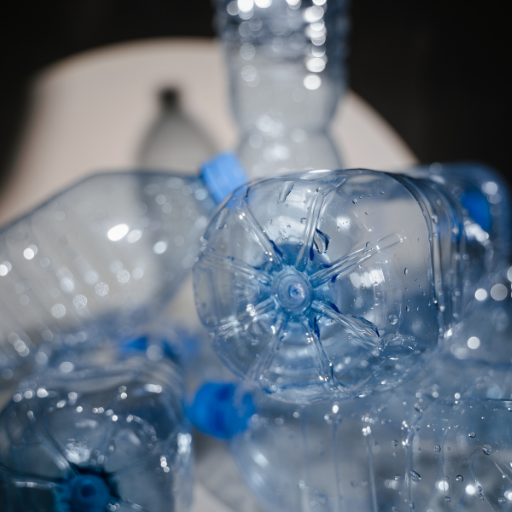
Unlike producing plastic from scratch, which requires extracting crude oil and natural gas, recycling is less energy-intensive as it utilizes pre-existing materials. Recycling lowers emissions of greenhouse gases, reduces the amount of plastic waste found in landfills, and fosters a healthier ecosystem. These benefits lead to a cleaner, more sustainable environment, although some low-quality recycled plastic may lack the enhanced versatility offered by virgin plastic, due to the recycling process used. Since these factors impact the quality of the recycled plastic, it is true that there are limitations when compared to virgin plastics. Regardless, recycling will always remain one of the most effective solutions for tackling environmental problems.
What are the Advantages of Using Recycled Materials?
The use of recycled materials has a significant impact on the environment, the economy, and society. Furthermore, one of the benefits is noted in the conservation of resources. For instance, recycling a single ton of paper saves roughly 17 trees, 4,000 kilowatt-hours of energy, and 7,000 gallons of water. In the same manner, recycling aluminum uses about 95% less energy than producing new aluminum from raw materials. These reductions in energy consumption help lessen the amount of greenhouse gas emissions, which is important in combating climate change.
The use of recycled materials is helpful in manufacturing because it lowers the need for mining and logging which tend to be very harmful to sensitive environments. This practice takes care of natural habitats and biodiversity while also aiding in controlling soil erosion and pollution associated with mining.
In terms of economics, the recycling industry produces new employment opportunities and new ideas. According to the EPA, the United States created over 681,000 jobs from recycling and reuse activities which to $37.8 million in wages and $5.5 billion in tax revenue. The same report further explains that new businesses and manufacturers also enjoyed lower costs in purchasing new materials and reduced energy consumption.
In terms of social impact, the use of reclaimed materials contributes to the growth of community awareness and participation in sustainability initiatives. This encourages citizens and corporations to reduce waste and practice environmental sustainability, thereby creating a circular economy where resources are reused, repurposed, or recycled instead of discarded.
In general using recycled materials as the basis of industrial production processes have numerous positive effects which include creating a balanced sustainable efficient economy that benefits the community while minimizing the impact on the environment.
How is the Recycling Process Carried Out?
Recycling has processes that ensure materials are transformed into new, effective products. One of these processes is collection and segregation, which involves waste collection from homes, offices, and recycling centers to be sorted into plastics, paper, metals, and glass. A number of technologies such as optical sorters and magnetic systems aid sorting facilities in providing better accuracy and efficiency.
Ensuring materials are cleansed of all impurities and contaminants is the next step after segregation. Stickers and labels from plastics are washed off and adhesives and inks are removed from paper and cardboard. This stage is critical because recycled products are only as good as the input material, thus, any contaminating substance hampers value.
Removal of contaminants marks the start of the processing phase, where the cleaned material is turned to raw form, ready for manufacturing. For instance, paper is pulped into fibers, metals are melted and purified, and plastics are shredded and melted into pellets. These raw materials undergo further processing into new products, which minimizes reliance on unprocessed resources. Industry statistics indicate that recycling a ton of aluminum saves nearly 95% energy required to produce new aluminum, demonstrating the potential energy savings from recycling.
Ultimately, the final goods are returned to the market, completing its cycle. The public also plays a key role in the success of recycling systems, since proper sorting and compliance with local re-use and recycling policies heighten the accuracy of the process. Following these steps helps recycling achieve reduced harmful impacts on the environment, preservs the earth’s resources, and improves overall ecosystem health.
What are the Challenges in Using Recycled Plastics?
Weaving through systems of sustainable business models comes with a myriad of challenges. One that stands out is the issue of inline quality control.” In my eyes, maintaining quality cohesiveness stands out as one of the prime issues presented while integrating recycled plastics in the production line. Rather, the composition of recycled plastics can be inconsistent, leading to differing issues in terms of strength, engineering, toughness, or durability of the final product. Also, during the recycling process, a layer of contamination could render a batch unusable or require additional costly delamination to process the material and make it usable. Inefficient recycling methods coupled with minimal advanced technologies in certain regions result in limbo for the supply chain, further complicating the matter. Lastly, there is still a school of thought held by certain industries and subgroups of consumers that holds that notions of recycled products are of lesser value, which reduces the scope for unrestricted uptake.
Why Choose Recycled Plastic Solutions Over Virgin Plastics?
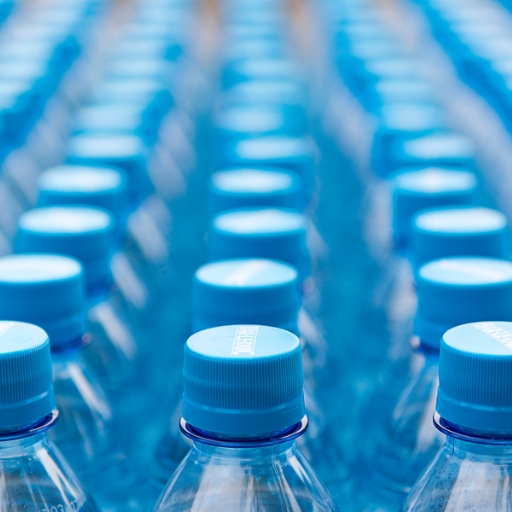
Compared to virgin plastics, recycled plastic solutions provide greater environmental and economic advantages. They aid in conserving natural resources such as petroleum by lessening the demand for new plastic production. Furthermore, they lower the greenhouse gas emissions incurred in manufacturing processes, making them a better choice. Also, using recycled plastics helps reduce waste in landfills and lessens the pollution caused by plastics. For companies, switching to recycled plastics can enhance brand perception and meet the growing consumer needs for green products. This helps in accomplishing the circular economy goals, which increases sustainability in the long run.
What are the Environmental Benefits of Using Recycled Plastics?
The “green” advantages of reusing plastics are immense and influential. Compared to producing virgin plastic, recycling plastics requires less energy. For example, using recycled PET (polyethylene terephthalate) can reduce energy usage by almost 50% whilst decreasing emissions of greenhouse gases by 60%. Furthermore, recycling a ton of plastic gets rid of the need for 16 barrels of oil, which is a limited resource essential to various industries.
Recycling also avoids capturing plastic waste from dumping sites therefore averting the leach of harmful chemicals into the earth and water and safeguarding ecosystems and wildlife. As previously mentioned, it helps in considerably cutting down pollution in the ocean which is a major international concern because the ocean receives over eleven million metric tons of plastic every year. The broad use of plastics can greatly reduce this number.
As stated, it helps in bringing down the need for resource extraction and refined manufacturing. For instance, creating products from recycled materials such as used plastics requires less natural resources like water, oil, and natural gas. This helps not only retains these scarce resources, but also slows the amount of damage done to the environment due to excessive extracting and processing activities.
In addition, the use of products containing plastics aids in managing waste and promoting new methods of recycling, which makes the system self sustaining. Everyone can benefit from using recycled plastics and help protect the environment for coming generations.
How Does Using Recycled Plastics Reduce Waste?
Recycling plastics essentially reduces the waste that would have been created from plastics idling in landfills or cluttering the beautiful natural outdoors. In addition to that, it also lessens the economic activity revolving around the creation of ‘original’ or primary plastics. This is achieved by reducing plastic production later in the system’s waste generation process. Society’s dependence on needless plastic materials is also drastically reduced. Most importantly, it supports the creation of circular economies where repurposing and resource restoration are encouraged.
What is the Energy Consumption in Producing Virgin vs Recycled Pellets?
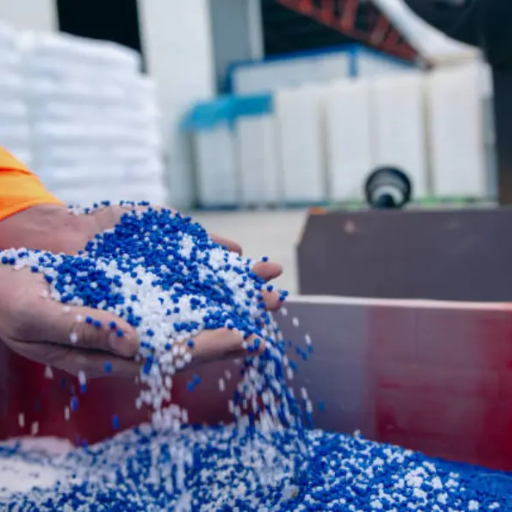
Making recycled pellets takes significantly less energy than making virgin plastic pellets. On average, the energy required for producing recycled pellets can be up to 80% lower than that of producing virgin plastics. This efficiency is mainly due to the extraction and refinement of materials such as crude oil and gas. These raw material processes devour enormous amounts of energy. Contrarily, recycling is much more effective because it makes use of existing plastic materials. This results in less resource extraction and processing. Such energy effectiveness ensures that recycling remains an eco-friendly approach.
How Does Energy Consumption Differ Between the Two?
It is well established that producing recycled plastic is significantly less energy-intensive than working with virgin plastic. This “diverted energy” refers to the energy that can be saved while creating recycled plastics. It has been analyzed that the production of one ton of virgin plastic consumes from 62 to 108 gigajoules of energy, based on the plastic variety and other factors. In stark contrast, collecting energy for the production of recycled plastics is, on average, 50 to 75% lower. Therefore, the recycling of high-density polyethylene (HDPE) could save up to 88% of the energy needed for its virgin production.
The difference is primarily due to the fact that virgin-plastic manufacturing requires significant basic fuel input steps of extraction, refining, and polymerization of the petroleum or natural gas raw material. On the other hand, the strategy for recycled plastics is far simpler. These products just have to be reworked. The raw materials don’t need to be changed in any way; no extraction, refining, or other such processes are necessary. These energy savings should lead to an increased focus on developing recycling systems, as the impact of plastic production on nature would diminish dramatically.
How Can Using Recycled Plastics Lower Emissions?
The use of recycled plastic can help reduce greenhouse gas emissions at each stage in the production and usage of a plastic good. Recent studies indicate that producing plastic from recycled materials can lower CO2 emissions by 30% to 80%, compared to making plastics out of new materials. This is due to the lack of raw material mining and processing energy expenditures.
Moreover, recycling these materials lessens the need for virgin plastic, which is usually derived from natural resources like natural gas and petroleum. The petroleum industry utilizes roughly 4 to 8% of the world’s annual supply for producing plastics. Switching to recycled plastics could significantly curb this dependency. For example, each ton of recycled plastic saves approximately 5,774 kWh of energy, averting the use of 16.3 barrels of oil, which considerably decreases carbon emissions.
Elimination of incineration or landfilling wastes also decreases emissions. Recycling plastic wastes reduces the amount of waste dumped into landfills which later turn into methane emitters. By managing these wastes through recycling, emissions are cut and aid in attaining global sustainable waste management goals.
What are the Types of Plastic Used in Virgin and Recycled Products?
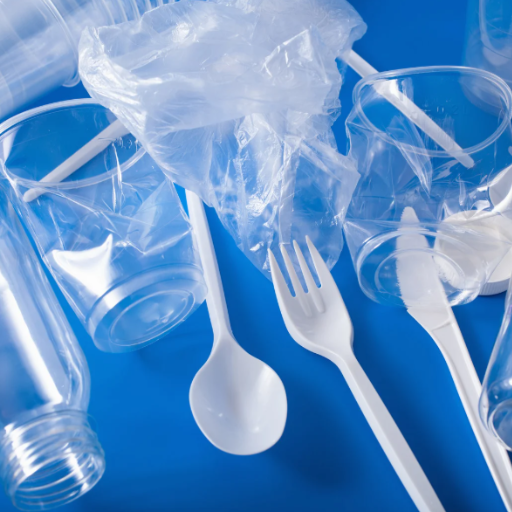
The major categories of plastic that are embraced in both virgin and recycled products are:
- Polyethylene Terephthalate (PET): Commonly utilized in beverage containers, food packaging, and as polyester fibers.
- High-Density Polyethylene (HDPE): Commonly found in milk jugs, detergent bottles, and piping.
- Polypropylene (PP): Found in packaging, auto parts, and household items such as storage boxes.
- Low-Density Polyethylene (LDPE): Present in plastic bags, flexible bottles, and insulating materials.
- Polystyrene (PS): Used in disposable tableware, food containers, and as insulation.
It is largely due to the ability to be reprocessed into new items that these kinds of plastics are popular among recyclables.
What are the Common Virgin Plastic Materials?
Virgin plastics can be described as new plastic resins that have been made from scratch and not recycled or used before. Essentials of life, such as natural gas and crude oil, are processed to derive petrol chemicals, which are then converted into Virgin plastics. Given below is a list of the most commonly used Virgin plastics and how they are used:
- Polyethylene (PE):
-
-
- Polyethylene (PE) is subdivided into categories such as high-density and low-density, and it is the most widely used plastic in the world.
- Applications: Dairy products containers, lathered soaps containers, food containers, piping, and packaging film.
- Production: Global production is expected to exceed 110 metric tons annually by 2025.
-
- Polypropylene (PP):
-
-
- Lightweight and durable, Polypropylene is resistant to many chemicals.
- Applications: Carpet textiles, food containers, automotive parts, and everyday reusable containers.
- Market Insight: Polypropylene is one of the biggest consumed goods accounting for nearly 20% share of global plastic production with strong demand in car manufacturing and healthcare industries.
-
- Polyvinyl Chloride (PVC):
-
-
- Rigid or flexible with varying degrees of instrument, PCV has various applications, both civil and military.
- Applications: Medical tubing, cables, flooring, pipe fittings.
- Fact: Used primarily as construction material PVC is very durable with over 40 million tons used per year around the world.
-
- Polystyrene (PS):
-
-
- It’s often found in both solid and foam forms as a lightweight and easily moldable material.
- Applications: Disposable food packaging, food trays, insulation, and disks for optical use.
- Environmental Aspect: Its use is of considerable concern due to the risks involved in chemical degradation processes in recycling.
-
- Polyethylene Terephthalate (PET):
-
-
- Of particular importance due to its strength, clarity, and great barrier properties.
- Applications: Packing and bottling drinks, fibers used in clothing, and containers for food.
- Key Statistic: Due to the beverage industry, demand for PET packaging is expected to increase at an approximate 7% CAGR.
-
So, virgin plastics are key to the manufacturing of consumer and industrial goods. As industries try to find alternatives such as bioplastics and more sustainable approaches, understanding the roles of these plastics and their market implications becomes even more important.
What are the Types of Recycled Pellets?
Recycled pellets are produced from either post-consumer or post-industrial plastic waste and are classified according to the processing techniques used, the raw materials, and the intended application. The following highlights the critical types of recycled pellets and their descriptions:
- Post-Consumer Recycled Pellets (PCR): These pellets are derived from plastic waste generated by households or businesses, including used bottles, packaging materials, or containers. PCR materials are increasingly being adopted in the packaging, automotive, and textile industries. A recent analysis of the market indicates the demand for PCR plastics is growing by over 8% per year for sustainable packaging purposes.
- Post-Industrial Recycled Pellets (PIR): PIR pellets are manufactured from plastics sidestreams or offcuts from a business’s industrial peculiarity processes. PIR pellets are very appealing for businesses seeking to reclaim their production by-products in the automotive and consumer goods industries, thereby enhancing their material efficiency.
- High-Density Polyethylene (HDPE) Recycled Pellets: HDPE is recycled extensively into pipes, construction materials, and bottle caps. Now, it is one of the most sought-after recycled materials thanks to its long-lasting nature and flexibility. The worldwide market for recycling HDPE was worth more than $7 billion in 2022, with predictions for consistent growth due to its increasing use in packaging solutions.
- Polypropylene (PP) Recycled Pellets: Textile, automotive components, and household cleaning items usually make the most out of Polypropylene. The industrial applications of recycled PP are numerous due to its high heat-resistance properties. Demand is projected to grow at a rate of 6% over the next few years.
- Low-Density Polyethylene (LDPE) Recycled Pellets: LDPE recycled pellets are primarily used in the production of plastic bags, films, and agricultural sheets. With a growing emphasis on reducing single-use plastics, the market for recycled LDPE products is expanding, supporting global sustainability goals.
- Polyethylene Terephthalate (PET) Recycled Pellets: PET is among the most frequently recycled types of plastic and is a common raw material for beverage bottles, food packaging, and textile fibers. Industries are shifting to greener packaging alternatives, driving growth in the recycled PET market, which is projected to reach over $14 billion by 2030.
Recognizing the different types of recycled pellets and their use cases illustrate the role they play in the circular economy ecosystem. These materials are crucial in alleviating issues pertaining to reduced virgin plastic raw material, plastic waste in landfills, and greenhouse gases associated with both industry and consumers.
How are Recycled PET Pellets Incorporated into Products?
The versatility and sustainability of rPET makes it incredibly useful across many different industries. These pellets are mainly used in the production of packaging materials including; beverage bottles, food containers, and clamshells. Industry reports state that the use of rPET in the global beverage industry is expected to significantly increase, with some manufacturers pledging to use up to 50-100% recycled content in their bottles by 2025.
Other than packaging, rPET is a vital material for the textile industry. They are spun into fibers used to make garments, upholstery fabrics, and carpets. To illustrate, somewhere around 10 standard sized plastic bottles is required to produce enough polyester fiber for one T-Shirt. rPET is also increasingly being used in the automotive industry, where it is molded into internal parts such as seat cushions and carpets which further underscores its versatility.
The increasing integration of rPET into products is aligned with a global shift towards sustainability and actively works to lessen one’s ecological footprint. The use of rPET instead of virgin plastics gives businesses the opportunity to save resources, lower energy use in production, and lessen pollution in the manufacturing of plastics. In this regard, rPET is a key element of a greener and circular economy.
Reference Sources
- A Comparative Bibliometric Analysis on Plastic Waste Recycling1:
- Key Findings: This study highlights the environmental and economic benefits of transitioning from a linear to a circular economy. It emphasizes the importance of recycling plastic waste to reduce resource consumption and mitigate environmental impacts. The research identifies polyethylene terephthalate (PET) as the most recyclable plastic, with significant potential for reducing waste and energy consumption.
- Methodology: A bibliometric analysis was conducted using Scopus and Web of Science databases, analyzing 2,083 articles from 2014 to 2023. Tools like VOSviewer and OriginPro were used to create bibliographic maps and strategic charts.
- Recovery of Plastics from WEEE through Green Sink–Float Treatment2:
- Key Findings: This study demonstrates the effectiveness of using molasses-based solutions in the sink–float technique to separate and recover plastics from waste electrical and electronic equipment (WEEE). It achieved high recovery rates for various polymers, including 100% for PVC and PA6.
- Methodology: The research involved characterizing plastics using near-infrared spectroscopy (NIRS) and Fourier-transform infrared spectroscopy (FTIRS). The sink–float technique was tested with molasses solutions of varying densities to optimize polymer separation.
- Impact of Plastic Packaging Design on the Sustainability of Plastic Recyclers3:
- Key Findings: Implementing Material Value Conservation (MVC) design principles in plastic packaging can enhance the economic, environmental, and social sustainability of recycling plants. The study found that increasing the availability of high-quality recyclable plastic waste improves profit margins and reduces environmental impacts.
- Methodology: The study used feasibility analysis, including Net Present Value (NPV) and Internal Rate of Return (IRR), to assess economic sustainability. Data was collected through surveys and expert interviews, focusing on the impact of MVC design on recycling efficiency.
- Top ABS Plastic Pellets Suppliers in China
Frequently Asked Questions (FAQs)
Q: What are the benefits of using recycled plastics vs virgin plastics?
A: Recycled plastics help reduce the volume of plastic waste and plastic pollution by reusing materials that would otherwise end up as waste plastic. They also reduce the need for new plastic production, thus conserving resources derived from fossil fuels, unlike their virgin counterparts.
Q: How does using recycled polypropylene contribute to a sustainable plastic industry?
A: Recycled polypropylene contributes to a sustainable plastic industry by minimizing plastic packaging waste and decreasing the environmental impact associated with producing new plastic products. It promotes the incorporation of recycled materials, reducing reliance on materials derived from fossil fuels.
Q: What is the difference between incorporating recycled plastic and using virgin plastic pellets?
A: Incorporating recycled plastic typically involves using post-consumer recycled materials, which helps mitigate plastic debris and pollution. In contrast, virgin plastic pellets are building blocks for plastic production made from virgin plastic, which involves fresh extraction and processing of raw materials.
Q: Why is it important to choose recycled plastics as an alternative to virgin plastics?
A: Choosing recycled plastics as an alternative to virgin plastics is important because it supports a circular economy, reduces environmental impact, and lessens the need for new plastic production. This choice helps decrease the volume of plastic waste and conserves natural resources.
Q: What role does the use of recycled plastics play in reducing plastic pollution?
A: The use of recycled plastics plays a significant role in reducing plastic pollution by decreasing the amount of waste plastic and plastic debris in the environment. By reprocessing used materials, the plastic industry can help mitigate the negative impacts associated with discarded plastic products.
Q: How does the use of recycled polypropylene vs virgin polypropylene affect the environment?
A: Recycled polypropylene reduces environmental impact by diverting materials from landfills and decreasing the demand for new resources derived from fossil fuels. This contrasts with virgin polypropylene, which requires fresh raw materials and energy-intensive processing.
Q: Are there any challenges to using recycled plastics in new plastic products?
A: Yes, there can be challenges to using recycled plastics in new plastic products, such as potential impurities, variability in material properties, and the need for specialized processing techniques. However, advancements in technology are continually improving the quality and consistency of recycled materials.
Q: In what ways can the plastic industry incorporate recycled materials to promote sustainability?
A: The plastic industry can incorporate recycled materials by using post-consumer recycled plastic in manufacturing, developing new technologies to improve recycling processes, and creating products designed for recyclability. These efforts help reduce plastic packaging waste and promote sustainable practices.
Q: What are the economic benefits of using recycled plastics vs virgin plastics?
A: Using recycled plastics can offer economic benefits by reducing manufacturing costs associated with raw material extraction and processing. It also opens up new markets for recycled products, driving innovation and job creation within the recycling sector.

